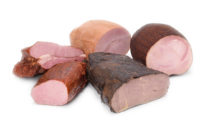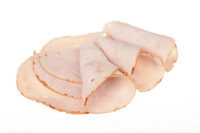Phosphates are a multifunctioning ingredient. The function of phosphates is primarily moisture management, but that moisture management cascades into other properties such as texture improvements, viscosity changes and even in some cases affecting product color, says Jeff Sindelar, associate professor in the department of animal sciences at the University of Wisconsin in Madison.
Phosphates also act as an antioxidant, bind water, improve and stabilize color, prevent off flavor, prevent purge and improve tenderness, adds Wes Schilling, professor of food science for Mississippi State University.
While phosphates offer many benefits to meat and poultry products, the ingredient is not a clean-label one. The growth of clean-label, natural and organic meat and poultry products is leading to a decrease in the use of phosphates.
“There is a definite trend for replacement of phosphate in food products,” Schilling says. “However, phosphate should be used in processed meat products unless the customer requests a natural label or specifically requests for it to be excluded from the product.”
“It is extremely difficult to replace phosphates in meat and poultry products,” he says. “It is not possible to replace them and maintain the same quality product. Processors are not able to replace the functionalities of phosphates with other ingredients. However, processors are using bicarbonate or carbonate in the water as a processing aid to increase pH, a natural antioxidant to decrease oxidation, and binders such as fiber, starch and various proteins to bind water.”
While a variety of ingredients exist to replace phosphates, the most successful ingredients are combinations of ingredients, Sindelar says. Ingredients that serve a moisture holding capability, such as starches and fibers, coupled with pH-changing ingredients, such as a sodium citrate, an ingredient that has pH buffering capabilities to increase the overall meat system pH are combinations being used. This is necessary, Sindelar says, because what makes them effective is their ability to do two things: One is to buffer the pH of the meat system, which changes the ionic strength so the number of charges available to hold on to the moisture increases. The second is it creates available binding sites.
“With an ingredient that can hold onto moisture in some facet and even with that system there still aren’t combinations that cumulatively replace the function of phosphates, but there are some that are pretty close and do a pretty good job,” Sindelar says.
“I would say use phosphates whenever the customers allow it,” Schilling says. “If not, a multi-ingredient approach is needed in which pH is increased, ionic strength is increased, antioxidants are used, and ingredients that bind water are used.”
Sindelar doesn’t anticipate a dramatic change in the use of phosphate in the near future as clean-label meat and poultry products have been growing for several years and the decreased use of phosphates may plateau. Moving forward, with the understanding of ingredients and how different groups of ingredients can potentially serve as phosphate replacers and with the refinement of those ingredients and systems of ingredients, Sindelar expects to see more phosphate replacement offerings that are improved versions of existing replacements or new ones that may drive some companies away from phosphates.
“I don’t suspect that’s going to be a big significant change because phosphates are still one of the cheapest ingredients pound for pound for what they do,” he explains. “Phosphate replacement ingredients are much more expensive than phosphates, and so there’s always this pressure of cost that’s always brought into the equation. Frankly, it probably limits how much phosphates can be eliminated from meat products in general.” NP







Report Abusive Comment